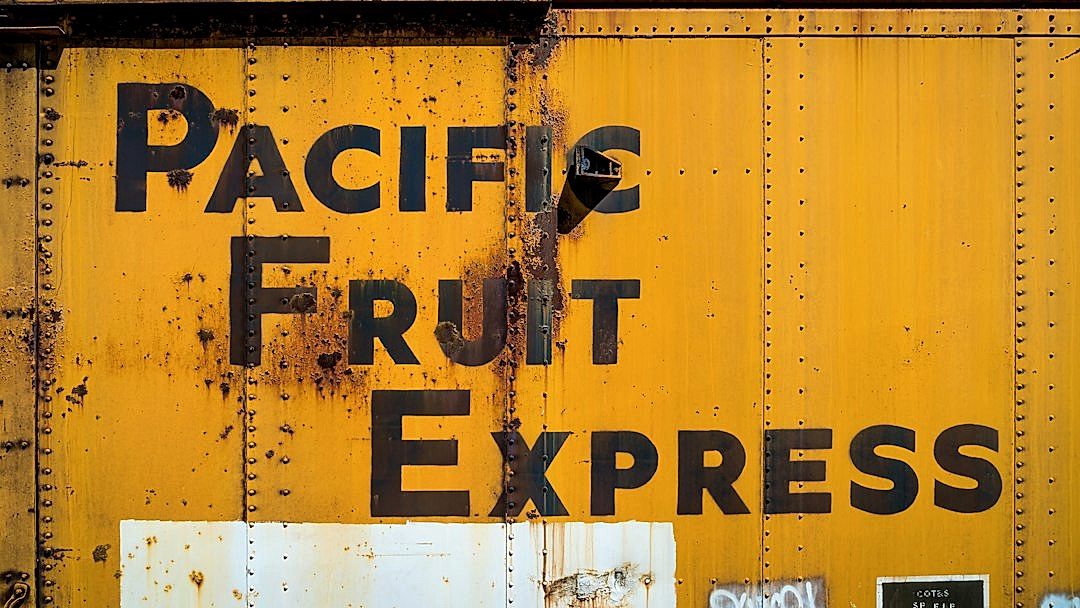In the field of agricultural goods supply, the transportation of produce plays a critical role in ensuring product quality, sustainability, and business profits.
This sector, however, poses unique challenges due to the perishable nature of the goods involved, calling for strategic approaches for optimal results.
With proper logistics management, monitored temperature control, and more, packers can more effectively, efficiently, and profitably deliver their produce to market.
Errors or deficiencies in the transportation process can significantly impact the quality of the produce delivered, ultimately affecting consumer satisfaction, safety, and commercial success.
Therefore, it is not an aspect to overlook or downplay.
This article seeks to provide valuable insights and practical tips for improving this crucial aspect of the agricultural supply chain.
Contents
- Tips For Optimizing Produce Transportation For Packers
- 1. Maintain optimal humidity and temperature during transport
- 2. Use Ventilation to Prevent Condensation and Spoilage
- 3. Pack tightly, but avoid crushing or bruising.
- 4. Use reliable, high-quality packaging materials.
- 5. Ensure cleanliness throughout every stage of transportation.
- 6. Make efficient loading/unloading plans to save time.
- 7. Regularly Inspect and Maintain Transportation Vehicles.
- The Bottom Line
Tips For Optimizing Produce Transportation For Packers
1. Maintain optimal humidity and temperature during transport
The first crucial tip to efficiently transport produce and maintain their freshness is to regulate temperature and humidity throughout the transportation process.
The temperature and humidity levels significantly affect the lifespan of fruits and vegetables.
If not controlled, these factors can accelerate the ripening and eventual spoilage of the commodities, leading to considerable losses.
Each type of produce may have specific temperature and humidity requirements, and it’s essential to understand and integrate these into the transport plan.
For instance, tropical fruits like mangoes and bananas require temperature levels between 12 to 14°C and humidity levels around 90%.
In contrast, vegetables like lettuce and spinach need cool temperatures typically ranging from 0 to 2°C and very high humidity levels of 95 to 100%.
Understanding and applying the specific temperature and humidity conditions for each type of produce is not only ideal but is a necessity to maintain optimal produce quality.
Advanced refrigerated trucks equipped with thermohydrometers can monitor and control these variables efficiently.
These devices measure the ambient temperature and relative humidity, providing real-time data to the drivers or the central control team.
This visibility allows quick adjustments when discrepancies occur, ensuring that the produce stays in the desired conditions throughout the trip.
In addition to real-time adjustments, pre-cooling the transport vehicle to the desired temperature before loading the produce is a best practice.
This not only creates an ideal environment right from the start but also reduces the load on the vehicle’s refrigeration system.
Finally, remember that containers filled with fruits and vegetables generate heat.
Factoring in this internal heat load and setting the transport vehicle’s temperature appropriately is imperative for successful produce transportation.
Implementing a comprehensive temperature and humidity management plan not only maintains produce freshness but also maximizes profit margins by reducing losses from spoilage.
Maintaining optimal humidity and temperature during transport is much more than a recommendation, it is a cornerstone strategy for successful produce transportation.
2. Use Ventilation to Prevent Condensation and Spoilage
Ventilation is vital in optimizing produce transportation as it aids in the control of temperature, humidity and contributes to the prevention of condensation and spoilage.
This condensation can cause major losses due to its impact on the quality and shelf-life of the produce.
The role of ventilation in produce transportation cannot be overemphasized as it helps in the maintenance of the quality of the produce.
By simply ensuring proper ventilation in transportation vessels, you can drastically scale down the rates of produce spoilage and thereby increase profits.
The use of ventilated containers or refrigeration units with specialized cooling and ventilation systems can be key in ensuring the freshness of produce during transport.
Investing in well-ventilated trucks or vessels can help in reducing the condensation that forms when the produce is being transported from a cooler to warmer place.
Furthermore, the spoiling and rotting of produce are primarily due to inadequate ventilation leading to excessive moisture which breeds bacteria and fungus.
It is crucial to emphasize that proper ventilation helps in reducing these excessive moisture levels, thus reducing the chances of spoilage.
Keep in mind that not all produce requires the same level of ventilation.
Understanding the specific ventilation needs of each type of produce you are transporting will go a long way in maintaining their quality and reducing waste.
In some cases, a controlled or modified atmospheric system may be necessary to provide optimal conditions for the transportation of certain types of produce.
Often, these methods alter the ratio of oxygen, carbon dioxide, and nitrogen to slow down the ripening and spoiling processes.
It is also worth noting that ordering, stacking and arranging the products in a way that allows for good airflow can effectively contribute to the maintenance of good ventilation.
Lastly, engagement with professionals in shipping or logistic services, knowledgeable about the unique nuances of produce storage and transportation, can vastly optimize your transportations processes.
Yes, there might be costs attached to these equipment or services, but the savings from having significantly less spoiled produce can compensate for these costs.
3. Pack tightly, but avoid crushing or bruising.
When transporting produce, establishing an optimal packing method is crucial for maximize efficiency and minimizing damage to the goods.
It’s essential to pack the produce tightly in the transportation container to prevent the items from shifting and jostling during transit.
This secure packing method can reduce the risk of produce falling over during transportation and suffering damage or bruising.
But while tight packing is important, it’s equally vital to avoid over-packing the container.
Remember, each fruit or vegetable has its own space and air needs to maintain their quality and freshness.
Over-packing can lead to crushing, bruising, or suffocating the produce, compromising their quality, marketability, and possibly safety.
It’s recommended to use customized containers or boxes designed specifically for the type and size of the produce being transported.
These produce-specific containers provide right amount of space and support to pack the goods tightly yet safely.
Moreover, it’s advised to use layers of cushioning material such as recycled paper pulp or foam to protect the produce from impact and absorb shock during transport.
Especially for fragile produce, this can significantly minimize the risk of damage or bruising.
The positioning of the produce in the container is another crucial aspect of packing.
Ensure that heavier produce are placed at the bottom and lighter produce on the top to avoid crushing or bruising.
Failing to use a strategic, well-thought-out packing method can result in sub-par transportation results and loss of business due to spoiled or damaged produce.
Investing time and effort into packing your produce correctly can increase efficiency, minimize product damage, and ultimately result in dollar savings in terms of reduced waste and improved customer satisfaction.
In general, follow the principle of pack tightly, but avoid crushing or bruising to optimize produce transportation, ensuring high-quality delivery from packer to buyer.
4. Use reliable, high-quality packaging materials.
One of the critical aspects of optimizing produce transportation for packers is the use of reliable, high-quality packaging materials.
This involves choosing materials that are resilient, protective, and capable of withstanding harsh conditions during transport.
Packaging materials should be sturdy enough to resist crushing, especially for delicate produce.
The choice of packaging material significantly affects the quality of the produce upon arrival, and thus a key necessity in produce transportation.
It is also essential that the packaging material used allows for adequate ventilation.
This ensures that the produce does not spoil due to condensation and excess humidity, conditions that may occur during transportation and which could be detrimental to the produce.
Cardboard boxes, wood crates, plastic crates, and mesh bags are some of the packaging materials often used in produce transportation.
These materials have been tested and proven over the years to be effective in protecting and preserving produce during transportation.
Moreover, the use of packaging materials that are environmentally friendly is also encouraged.
These are materials that are biodegradable, recyclable, or made from renewable resources.
This promotes sustainability and reduces environmental pollution, thereby attesting to the fact that using high-quality packaging materials encompasses more than just protecting the produce during transportation,
While the cost of high-quality packaging materials may be slightly higher, the benefits in terms of reducing losses from spoilage and maintaining the quality of the produce certainly outweigh the cost.
Therefore, to optimally transport produce, packers should not compromise on the quality of the packaging materials.
Instead, they should view the use of reliable, high-quality packaging materials as a long-term investment that yields significant returns in preserving the integrity of the produce during transportation.
Thus, grading, packing, and packaging should be done properly and the packers should ensure that they are using the best quality packaging materials for optimal results.
Choosing the right packaging material, therefore, assures safety to produce as it increases resistance to harm and significantly optimizes produce transportation.
5. Ensure cleanliness throughout every stage of transportation.
Ensuring cleanliness throughout every stage of transportation is a key aspect in the optimisation process for produce transportation for packers.
This does not only imply maintaining sanitary conditions in the vehicles, but it extends to all elements involved in the process: the packing materials, the storage facilities, the loading and unloading equipment, and the personnel handling the produce.
It is important to remember that produce is highly susceptible to contamination, taking into account that vegetables and fruits have a substantial humidity content, creating perfect conditions for bacterial growth.
Moreover, many fruits and vegetables are consumed raw, increasing the risk for consumers if proper cleanliness is not maintained during transportation.
Measures for cleanliness must be enforced from the moment the produce is harvested till it reaches the market shelves.
This involves implementing and maintaining best hygiene practices among the personnel handing the produce at every step, which directly affects the quality of the food.
All that requires being meticulous in hygiene practices: workers should adhere to strict hygiene habits, wearing clean uniforms, using gloves and washing their hands regularly.
Similarly, all transportation vehicles and equipment must be thoroughly cleaned and sanitised before every loading operation.
Investing in automatic washing systems for trucks and containers can ensure a consistent level of cleanliness, minimising the risk of bacterial growth and cross-contamination.
Moreover, using quality packaging materials also contribute to cleanliness: a good packaging not only prevents physical damages to the produce but also serves as barrier against contamination.
Materials such as plastic crates or boxes are easily washable and reusable, providing an efficient method for maintaining cleanliness.
Another aspect to consider is avoiding overfilling the transportation vehicles: Leaving adequate space allows for proper ventilation, minimises the risk of product damage, and facilitates regular monitoring, cleaning and disinfection processes.
Finally, regular inspections and prompt response to any signs of contamination during the transportation process help detect and solve potential cleanliness issues before they escalate and affect the whole shipment.
Ensuring cleanliness is an ongoing process that requires constant attention and commitment, but the pay-off of delivering fresh, high-quality produce to the markets is well worth the effort.
This investment in cleanliness pays off in the long run by reducing product losses due to spoilage and contamination, therefore increasing the overall efficiency and profitability of the produce transportation process.
6. Make efficient loading/unloading plans to save time.
Efficiency is a key element when aiming to optimize the procedures involved in the transportation of produce for packers.
Developing and implementing a strategic loading and unloading plan can have a significant impact on the timeframe and costs linked to this process.
Such a plan should account for the individual traits and requirements of different types of produce being transported, considering their sensitivity to external factors like temperature and humidity.
The strategy should also be designed to maximize the use of available transportation space without risking the quality of the produce.
Directing resources towards designing and implementing an efficient loading/unloading plan is key in preventing unnecessary losses, saving time, and increasing profit margins for packers.
This plan should be adaptable to the specific conditions and circumstances of each individual transportation operation, considering the size and characteristics of the transportation vehicle, the distance and duration of the journey, among other factors.
It’s crucial not only to structure the plan meticulously but also to explain it to all involved parties to ensure its proper execution.
Investing in training and educating the personnel involved in loading and unloading procedures can hence be particularly fruitful.
Another key factor for efficient loading/unloading is the use of appropriate equipment and tools that can streamline the process without jeopardizing the quality of the produce.
Operation’s speed can be significantly increased, and risks can be reduced by employing automated machines or devices designed for handling sensitive items in minimal timeframes.
Meticulous planning and organization can also contribute to avoiding delays and ensuring the timely execution of the transportation process.
For example, clearly marking the packages to indicate their content and the best way to handle them can speed up the loading/unloading process and prevent any misfortune that can affect the produce.
The process could also be enhanced by strictly following a first in, first out (FIFO) strategy, ensuring that the items loaded first will be unloaded first, optimizing the freshness and quality of the produce.
Packers must always be prepared for any eventuality, taking into account possible delays due to weather conditions or mechanical issues with the transportation vehicle, and find the solutions in the loading/unloading plan.
Finally, continuous scrutiny and improvement of the plan are critical – learning from the past experiences and applying the extracted lessons can yield significant benefits and upgrade the efficiency of the overall transportation operation.
7. Regularly Inspect and Maintain Transportation Vehicles.
Maintaining the health of transport vehicles is paramount in ensuring the successful delivery of fresh produce to the market.
One of the primary factors which contribute to optimizing produce transportation, is investing time and resources into regular vehicle inspections.
Proper inspections not only prevent breakdowns but also minimize the risk of delays that could lead to the spoilage of fresh produce.
Regular maintenance might seem costly, but it’s cost-effective in the long run as it increases vehicle lifespan, and reduces the frequency of significant repairs and replacements.
The industry standards must be adhered to during these checks to ensure maximum efficiency of the vehicle.
Invest in a professional mechanic that will perform meticulous checks and repairs on your transportation vehicles, thus ensuring your vehicles are in top-notch condition.
Frequent oil changes, tire pressure checks, and brake tests are just a few of the regular maintenance practices required to keep a transportation vehicle functioning optimally.
Proper vehicle care also involves regular engine check-ups and tune-ups to keep the vehicle at its peak performance.
Keeping the transportation vehicle clean inside and outside is not just about aesthetics but also about promoting the quality of the produce during transportation.
On a larger scale, fleet management is crucial to ensure all vehicles are functioning well and are primed for their journey.
Furthermore, emergency service contacts should be kept at close reach in the event of unfortunate incidents which could present potential risks.
Ensuring a fruitful relationship with the emergency service providers can guarantee swift responses in any eventuality, thereby reducing the potential for produce damage or loss.
When it comes to deciding the timeline for inspections and maintenance, following the manufacturers’ guidelines is a reliable starting point.
However, experience from regular use also provides valuable insights on when different parts of the vehicle are likely to need attention.
Lastly, it’s pertinent to keep records of each vehicle that has been inspected or repaired.
Strong record keeping is essential as it highlights trends and can signal when a vehicle might become a liability and needs to be replaced.
The Bottom Line
Ensuring the quality and freshness of products during transportation is indeed a complex process demanding a holistic approach.
From maintaining the optimal temperature and humidity for the specific goods in transit, to using ventilation methods efficiently to ward off condensation and spoilage, every part of the process deserves meticulous attention.
This also calls for careful packaging using reliable, high-quality materials and delicate handling to avoid damages.
Cleanliness, a cornerstone of quality assurance, must be maintained at every stage of the transportation, supplemented by efficient loading and unloading plans for time management.
Rigorous and regular vehicle inspections and maintenance also serve as important pillars to a successful, cost-effective and quality-driven transport process.
As such, every link in the transportation chain must be managed with an eye for detail and a drive for constant improvement, rendering a seamless movement of goods without compromising on quality.




